Indian Air Force to Take Deliveries of Upgraded Variants of HAL Tejas from 2024
Radhika Bansal
03 Jul 2023
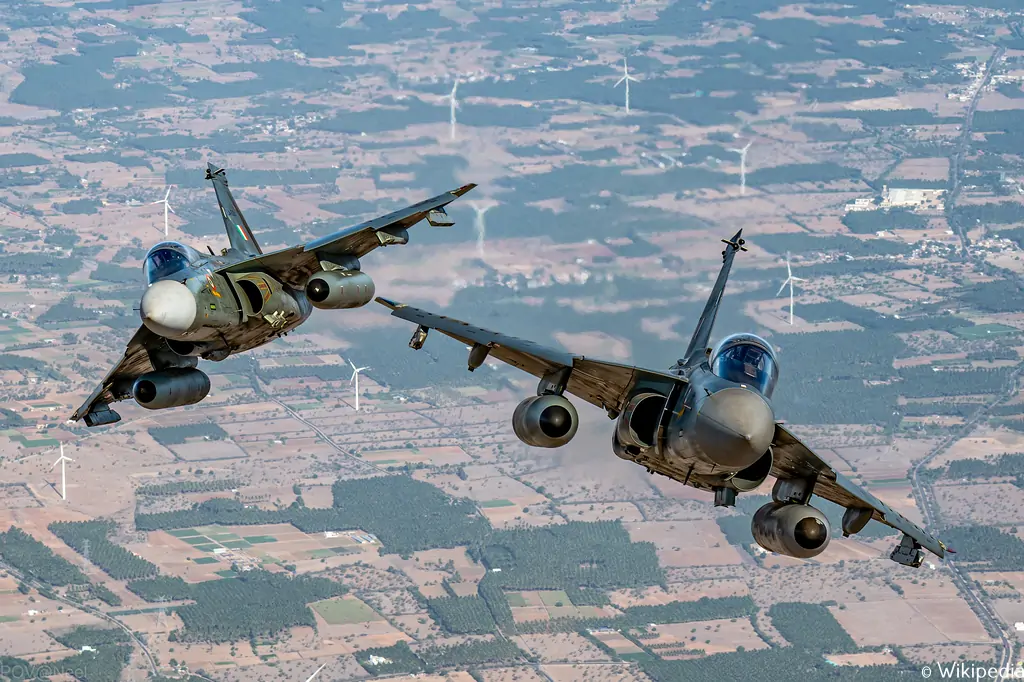
The Indian Air Force is expected to get deliveries of upgraded Light Combat Aircraft Tejas MK-1A from February next year, and the new variant of the indigenously-built jet will be capable of firing a plethora of weapons, including beyond visual range missiles, the Ministry of Defence said. As the jet completes seven years in service in the IAF, the ministry said the aircraft and its future variants will form the mainstay of the Indian Air Force (IAF).
In February 2021, the ministry sealed an INR 48,000 crore deal with state-run aerospace major Hindustan Aeronautics Ltd for the procurement of 83 Tejas MK-1A jets for the IAF. Tejas is a single-engine multi-role fighter aircraft capable of operating in high-threat air environments. Egypt, Argentina, the US, Australia, Indonesia, Malaysia and the Philippines are among the countries showing keen interest in procuring Tejas aircraft.
On Saturday, July 1, the Light Combat Aircraft (LCA) completed seven years of service in the IAF. "The confidence that the IAF responses in the Tejas are borne by its order for 83 LCA MK-1A," the ministry said. The ministry said the LCA MK-1A will have "updated avionics as well as an active electronically steered radar, updated electronic warfare suite and a beyond visual range missile capability."
"The new variant will be capable of firing a plethora of weapons from increased stand-off ranges. Many of these weapons will be of indigenous origin. The LCA MK-1A will see a substantial increase in the overall indigenous content of the aircraft," the ministry said. It said the deliveries of the aircraft are expected to commence in February 2024.
Tejas has been designed to undertake air defence, maritime reconnaissance and strike roles. The ministry said Tejas offers carefree handling and enhanced manoeuvrability, and that this capability is further enhanced with its multi-mode airborne radar, helmet-mounted display, self-protection suite and laser designation pod.
‘Flying Daggers’ Inducting Tejas
The first IAF squadron to induct the Tejas was the No 45 squadron, the 'Flying Daggers'. Over the years, the squadron progressed from Vampires to Gnats and then onto the MiG-21 Bisos, before being equipped with its current steed. Each of the aircraft flown by the Flying Daggers has been manufactured in India -- either under license production or having been designed and developed in India. In May 2020, No 18 Squadron became the second IAF unit to operate the Tejas.
It’s worth noting that each Tejas aircraft flown by the Flying Daggers proudly bears the “Made in India” stamp through indigenous design and development or under-license production. Following suit, No 18 Squadron joined the Tejas fleet in May 2020, further solidifying the Indian Air Force’s trust in this homegrown marvel.
Solidifying its position as a cornerstone of the Indian Air Force’s future, Tejas is set to evolve with the upcoming LCA Mk-1A variant. This upgraded version will feature advanced avionics, an Active Electronically Steered Radar, an enhanced Electronic Warfare suite, and a Beyond Visual Range missile capability, empowering Tejas to engage targets from increased stand-off ranges.
The IAF presently has 32 squadrons (16-18 planes each) of fighter jets against the 42 needed to tackle a collusive two-front threat against Pakistan and China. Over the next two-three years, all four squadrons (each one has 16-18 planes) of the Soviet-era MiG-21 fighter jets will retire. The IAF’s Jaguar, MiG-29 and Mirage 2000 jet fleets — all inducted in phases during the 1980s — are slated to retire in batches beyond 2029-30. These four types of jets are about 250 in number and are operating on an extended lifecycle.
The IAF has showcased India's indigenous aerospace capabilities by displaying the aircraft at various international events, including at Dubai Air Show in 2021, Sri Lanka Air Force anniversary celebrations in 2021, Singapore Air Show last year and Aero India Shows from 2017 to 2023. Whilst it had already participated in domestic exercises with foreign air forces, Operation Desert Flag in the United Arab Emirates in March was the Tejas' maiden exercise on foreign soil.
Read next
SpiceJet Completes the Settlement of a Loan Payment Worth INR 100 Crore to City Union Bank
Radhika Bansal
03 Jul 2023
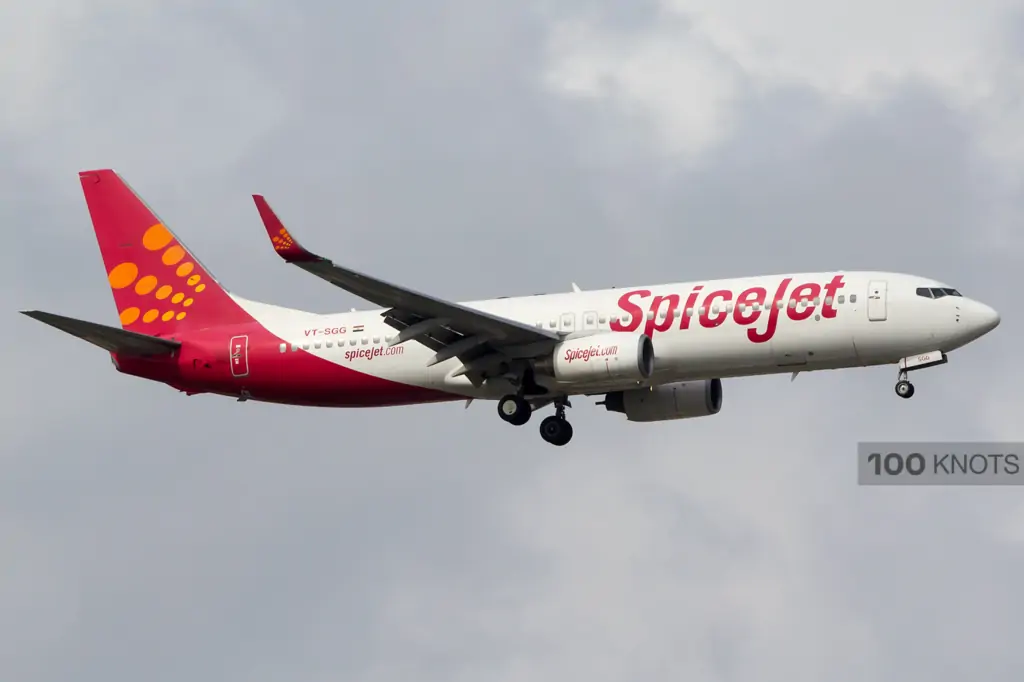
SpiceJet has successfully completed the settlement of a loan payment worth INR 100 crore to City Union Bank. The last tranche of INR 25 crore was paid on June 30, 2023, successfully closing the entire loan account which was taken in 2012, the airline company said in a release. This “successfully closes the entire loan account which was taken in 2012. The repayment of the loan amount releases all securities that had been pledged with the bank,” the statement added.
Notably, the repayment to City Union Bank follows a successful settlement agreement with Nordic Aviation Capital (NAC), a significant lessor for SpiceJet's Q400 aircraft. The agreement with NAC settled all past liabilities for the Q400s leased by NAC to SpiceJet. It will pave the way for the return and induction of three additional planes into the SpiceJet fleet. SpiceJet said it remains committed to finding amicable settlements with all its creditors as the airline builds back its fleet and its business.
The company had also pledged 20 million shares with the bank as collateral owned by the airline’s promoters, according to media reports. The recent settlement of Spicejet’s loan releases all securities that the company had pledged with the bank. The bank had marked the carrier’s account as a special mention account-1 (SMA1) in March last year. The airline filed an appeal in court against the bank’s declaration of SMA-1 in April. A company is classified as SMA-1 if the principal or interest is overdue between 31-60 days. SpiceJet said it remains committed to finding amicable settlements with all its creditors as the airline builds back its fleet and its business.
Last month, it was reported that the airline had entered into a settlement agreement with NAC. Post the settlement it would be inducting an additional three Q400 aircraft from NAC back into its fleet, which the lessor had repossessed earlier. At present, SpiceJet operates five Q400 aircraft leased from NAC. SpiceJet has been facing trouble with its lessors with as many as 25 out of its 76 planes being grounded as of May this year. The news has come amidst the airline facing an insolvency petition at the National Company Law Tribunal (NCLT).
SpiceJet operates about 250 daily flights to 48 destinations within India and to international destinations. Its fleet is a mix of aircraft including Boeing 737 MAX, Boeing 700 and Q400s. It also plies regional routes under UDAN. SpiceJet was launched in May 2005.
Shares Shoot Up
At 1:54 PM, the share was trading at INR 27.69 on the National Stock Exchange, up 1.61% from the previous close. SpiceJet shares gained 16.69% to INR 30.95 against the previous close of INR 27.25 on BSE. The aviation stock opened flat at INR 27.54 today. The stock has lost 38.11% since the beginning of this year and has fallen 38.74% in a year. In terms of technicals, the relative strength index (RSI) of SpiceJet stands at 45, signalling it's trading neither in the overbought nor in the oversold territory. The stock has a beta of 0.8, indicating average volatility in a year.
A total of 59.76 lakh shares of the firm changed hands amounting to a turnover of INR 17.97 crore on BSE. The market cap of SpiceJet rose to INR 1,844 crore. Later, the stock closed 12.44% higher at INR 30.64 on BSE. The stock hit a 52-week high of INR 52.40 on August 3, 2022, and fell to a 52-week low of INR 23.65 on May 23, 2023. With the payment of INR 25 crore, all the securities of the air carrier that had been pledged with the lender now get released.
Moreover, the cash-strapped airline has incurred losses since FY19. The company’s consolidated net loss swelled to INR 1,744 crore in FY22 from INR 1,030 crore in FY 21. It has not released FY23 results citing the ‘medical incapacitation’ of a key member of its audit committee.
Read next
US aircraft manufacturer Boeing is “looking at the business case for having a final assembly line (FAL) in India” and is also set to increase its sourcing from the country from the existing USD billion annually, a report said. Boeing India president Salil Gupte told The Times of India that Prime Minister Narendra Modi’s recent first state visit to America certainly set the stage for engine manufacturing in the country.
“We are looking at the business case for that (having a final assembly line in India)… focused on increasing sourcing that leads up to that —for components, higher value systems and parts of aircraft. FAL is relatively small in the overall value chain of an aeroplane, unlike say smartphones or electronics where a lot of value is added in the final step. It is critical but represents less than 10% of the overall value of an aircraft. Over time as the demand grows in India and for the region, we will evaluate the business case for a FAL,” ToI quoted Gupte as saying.
With over $1 billion annual sourcing from India, Boeing is reportedly the biggest original equipment manufacturer here, and its sourcing is now expected to go up significantly in the coming 2-3 years. "We have been at the $1 billion level of sourcing from India for the last 2-3 years. During this pandemic time, aeroplane production rates went down significantly. While global sourcing dropped in that period, in India it stayed flat at a billion dollars. So you can imagine how fast the growth here was even when aircraft production rates were lower. Now as those rates increase, India will ride that wave up," he told TOI.
Boeing on “Make in India”
Last week, Boeing’s CEO said his company backed Modi’s “Make in India” initiative and would play a vital role in the fast expansion of the country’s commercial aviation market. Boeing and European rival Airbus have together received firm orders for 970 aircraft worth USD 120 billion in the last four months from Tata group-owned Air India and IndiGo.
Boeing is also likely to get a considerable wide-body order from IndiGo, which is testing the waters with two Boeing 777s wet-leased from Turkish Airlines. Under the wet lease pact, planes are leased along with the operating crew and engineers. As the demand increases in India and for the region, the company will evaluate the business case for a FAL, Gupte said.
India, the world’s fastest-growing aviation market, is keen that both Boeing and Airbus set up FALs here. With Prime Minister Modi’s push, the country is getting the ecosystem for the defence side. Last year, Tata and Airbus decided to jointly make the C-295 transport aircraft for Indian Air Force in Gujarat. Modi’s recent state visit to Washington saw US major GE Aerospace signing a pact to jointly make fighter jet engines in India. These defence aviation ecosystems and supply chains will provide the groundwork for civil-side manufacturing and FALs.
At present, Boeing's sourcing from India is more than USD 1 billion (around INR 8,200 crore) a year, of which nearly two-thirds are manufacturing, making it the biggest original equipment manufacturer (OEM) importer from here. In the last 24 months, it has inked pacts for an additional USD 1 billion worth of contracts.
Gupte said during Covid, airplane production rates dipped substantially. While global sourcing activity took a hit, in India it stayed flat at a billion dollars. “So, you can imagine how fast the growth here was even when aircraft production rates were lower. Now as those rates increase, India will ride that wave up,” he said.
At the recently concluded Paris Air Show, Boeing declared new service contracts in India as well as the finalisation of Air India’s order of up to 290 new jets.
Boeing on HAL-GE Deal
Gupte further said that the announcement of GE Aerospace of the US signing a deal with Hindustan Aeronautics Limited of India to manufacture fighter jet engines "laid the groundwork for engine manufacturing in India". Gupte acknowledged the magnitude of this deal calling it a “big step forward”.
PM Modi has led from the forefront when it comes to expanding manufacturing in India, and the aerospace industry also received a fillip from his visit to the US last month. During his visit, Hindustan Aeronautics signed an agreement with GE Aerospace to jointly make engines for domestically manufactured fighter jets. This will provide a huge boost to Indian manufacturing by strengthening the supply chain.
Boeing in India
The collaboration between Boeing and India is not new. Over the years, Boeing has been actively involved in various initiatives and partnerships in the country. The company has established strong ties with Indian aviation stakeholders, including airlines, government bodies, and educational institutions. These collaborations have focused on initiatives such as pilot training programs, aerospace research and development, and technology transfer, all aimed at fostering the growth of the Indian aviation ecosystem.
Boeing's investment in India aligns with the broader vision of the Indian government to transform the country into a global aviation hub. With the implementation of progressive policies, infrastructure development, and emphasis on skill development, India is striving to create an enabling environment for the aviation industry to thrive.
Boeing has acquired a third of new aircraft orders from India in the past 18 months, per data compiled by UK-based analytics firm Circium. Its market share fell by over 50% in the past decade standing at 23% by the end of 2022. Boeing in India operates with the C17 cargo aircraft, the P8 anti-submarine warfare aircraft, the Apache attack helicopter, and the Chinook transport helicopter. There is also the entire narrow-body and wide-bodied head-of-state fleet with Boeing 737, 777 and 787.
(With Inputs from The Times of India)
Read next
The Lokpriya Gopinath Bordoloi International (LGBI) Airport, Guwahati has witnessed a 15% rise in passenger footfall in June this year to almost five lakh travellers. A spokesperson of the Adani Group-controlled facility said the LGBI Airport in Guwahati recorded a footfall of nearly five lakh passengers in June 2023, witnessing a sharp increase from the corresponding month of the last year.
"Out of the total, nearly 2.95 lakhs were departure passengers and the remaining were arrival travellers. It represented a total increase of 15% compared to last year's June," she added. The official said the airport witnessed nearly 4,000 movements of flights in June 2023, which was higher than the June 2022 figure. The largest airport in the Northeast had handled a record footfall of nearly five lakh passengers in May this year too, indicating that air travel is resurging strongly after the pandemic period.
"The LGBI Airport acts as a gateway to Northeast India along with its 32 domestic and two international destinations for passengers from Guwahati," she added. The Spokesperson further said that Guwahati’s top four national destinations are Delhi, Kolkata, Mumbai and Bengaluru, while the two international locations are Singapore and Paro. "Guwahati Airport is hopeful of consistent growth in the coming winter schedule, starting from October. In the winter season, the rise in the number of passengers will sharpen," she added.
Air travel is seeing strong growth post the pandemic. Northeast’s largest airport also handled a record footfall of around five lakh passengers in May 2023. This increased activity further solidifies the resurgence of air travel in the region.
About the Airport
Lokpriya Gopinath Bordoloi International Airport is an international airport serving Guwahati, the largest city of North-East India in Assam, India, and is also the primary airport of North-East India. It is the 12th busiest airport in India. The airport is managed by the Airports Authority of India and also serves as an Indian Air Force base. Operated by Adani Airports, Guwahati is a joint military/civil airport and is set to receive substantial redevelopment of its infrastructure and facilities. In January 2021, Adani Airports signed a concession agreement with the Airports Authority of India for the operation and management of Guwahati Lokpriya Gopinath Bordoloi Airport under a 50-year contract. Airports Authority of India announced it formally transferred operation and management responsibility for Guwahati Lokpriya Gopinath Bordoloi Airport to Adani Airports on 08-Oct-2021.
Named after the first Chief Minister of Assam, Gopinath Bordoloi, this airport has two terminals — Terminal 1 and Terminal 2. Passengers taking domestic flights head to Terminal 1 which can handle a footfall of 500 passengers. And Terminal 2 caters to international flights with a capacity of handling 125 passengers. With 14 check-in counters, 4 immigration counters and a custom counter, this is a comfortable airport. With air travel witnessing a steady growth post-COVID-19 pandemic, Guwahati Airport’s passenger footfall is also on the rise, and so is tourism to the North East.
The airport has undergone numerous expansions and renovations since its establishment in 1958. It handled more than 3.7 million passengers in 2017, an increase of 36% from 2016. The LGB Airport has witnessed annual traffic of over 23% in 2018–19 with a total footfall of 5.7 million passengers and 55,066 aircraft movements in the same period. The existing terminal building at the airport has a maximum handling capacity of 850 arrival/departure passengers an hour.
Read next
United Giving Away 30,000 MileagePlus Points to Inconvenienced Passengers
Abhishek Nayar
03 Jul 2023
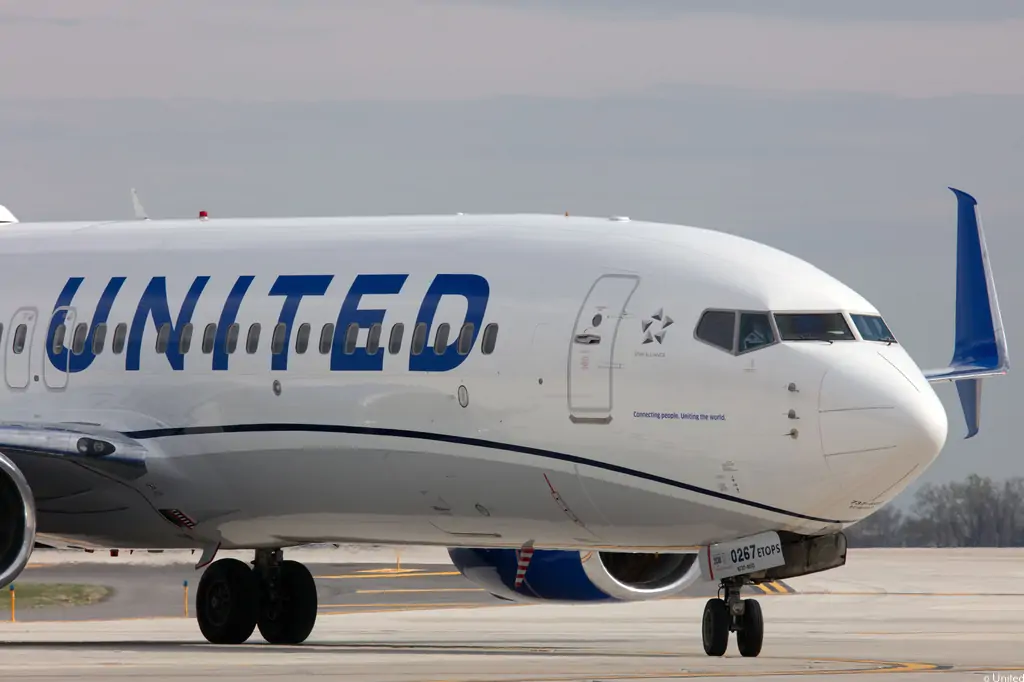
The lead-up to the Fourth of July holiday turned into a nightmare for United Airlines and its passengers. The airline experienced a series of flight delays and cancellations in the Northeast region, causing frustration and inconvenience for travelers. In response to the commotion, United Airlines took steps to mitigate the situation, including offering 30,000 frequent flyer points to the most affected passengers.
United Airlines' Difficult Week
United Airlines, one of the major carriers in the United States, faced a challenging week leading up to the Fourth of July holiday. A combination of factors, including increased travel demand, air traffic congestion, and unforeseen circumstances, resulted in widespread flight disruptions across the Northeast region. The situation garnered attention from various media outlets, with CNBC reporting on the escalating issue.
Flight Delays and Cancellations
Northeast Area Troubles
The Northeast region, a vital hub for United Airlines, experienced a surge in travel during the holiday season. This spike in passenger traffic, coupled with adverse weather conditions and air traffic congestion, led to an influx of delays and cancellations. Many travelers found themselves stranded or facing prolonged waiting times at airports.
Impact on Passengers
Passengers traveling with United Airlines during the week of flight disruptions in the Northeast experienced significant inconveniences. With over 40% of the flights delayed, many travelers had to endure extended waiting times and reschedule their plans. Business travelers faced potential disruptions to important meetings and appointments, while vacationers encountered unexpected hurdles in their travel itineraries.
United Airlines' Response
As the situation escalated, United Airlines took swift action to address the issues and restore customer confidence. Acknowledging their responsibility, the airline worked diligently to find solutions and provide appropriate compensation to the affected passengers.
Alleviating the Issue
Compensation for Affected Passengers
United Airlines recognized the inconvenience caused to its passengers and implemented a compensation plan to mitigate their grievances. The airline offered 30,000 frequent flyer points to the travelers who faced the most significant disruptions. The gesture aimed to demonstrate goodwill and value the loyalty of their frequent flyers.
Other Measures to Improve Service
In addition to the frequent flyer points, United Airlines evaluated their internal processes and logistics to identify areas for improvement. They invested in staff training, infrastructure enhancements, and real-time monitoring systems to minimize future disruptions. The airline also reassessed its communication protocols to ensure passengers receive accurate and timely information about flight changes.
Insights into Frequent Flyer Points
The Value of Frequent Flyer Points
Frequent flyer points are a form of currency awarded to loyal customers by airlines. These points can be redeemed for various benefits, such as free flights, upgrades, and exclusive perks. The value of frequent flyer points depends on the airline's reward program and the redemption options available.
Benefits for Affected Passengers
United Airlines' decision to provide 30,000 frequent flyer points to affected passengers offers them an opportunity to enjoy future benefits. These points can be used for free flights, upgrades to premium cabins, or access to airport lounges. By granting such compensation, United Airlines aims to retain customer loyalty and restore their faith in the airline's commitment to service excellence.
United Airlines and Customer Satisfaction
Customer satisfaction is crucial for airlines to maintain a strong brand image and customer loyalty. United Airlines' response to the flight delays and cancellations is a testament to their dedication to customer satisfaction. By promptly addressing the issue and offering compensation, the airline strives to ensure its passengers feel valued and supported.
Preparations for the Fourth of July
As the Fourth of July holiday approaches, United Airlines is diligently preparing to meet the increased travel demand. The airline is taking proactive measures to minimize disruptions and provide a seamless travel experience for its passengers. By learning from the recent challenges, United Airlines aims to deliver exceptional service during this busy period.
United Airlines CEO's Controversial Actions
Amidst the flight disruptions, controversy arose when it was revealed that United Airlines CEO, Scott Kirby, had utilized a private jet. This revelation drew criticism from customers and the public, who perceived it as a display of insensitivity towards the passengers and staff working tirelessly to handle the situation. The use of a private jet during a period of flight disruptions seemed contradictory to the challenges faced by United Airlines' customers.
The CEO's Apology and Response
Realizing the impact and negative perception surrounding his actions, United Airlines CEO, Scott Kirby, issued an apology. He expressed regret for his insensitivity and acknowledged the hard work of the airline's employees in managing the flight disruptions. Kirby emphasized his commitment to prioritizing customer satisfaction and assured the public that such incidents would not recur in the future. The CEO's apology aimed to rebuild trust and demonstrate United Airlines' dedication to addressing customer concerns.
Conclusion
United Airlines faced a tumultuous week of flight disruptions in the Northeast region due to intense storms and challenging weather conditions. However, the airline responded promptly and implemented measures to alleviate the inconvenience caused to their passengers. Through compensation in the form of frequent flyer points and other service improvements, United Airlines aims to rebuild customer trust and ensure a positive travel experience. However, controversy arose when United's CEO, Scott Kirby, utilized a private jet during the disruptions, leading to criticism and a subsequent apology. As the Fourth of July holiday approaches, the airline is focused on delivering exceptional service and meeting the travel needs of its customers. Moving forward, United Airlines strives to learn from this experience and maintain its dedication to providing excellent service even in the face of challenging circumstances.
With Inputs from CNBC
Read next
In today's digital age, e-commerce has witnessed exponential growth, with online shopping becoming increasingly popular. As more businesses and consumers engage in online transactions, the demand for efficient and timely freight services has soared. Recognizing this trend, Lufthansa Cargo has taken a proactive approach to enhancing its e-commerce capabilities.
The Significance of E-Commerce Operations
E-commerce operations play a crucial role in the global economy. With the proliferation of online marketplaces, consumers have access to a vast array of products from around the world. This has necessitated the development of sophisticated logistics networks to ensure the smooth movement of goods. Lufthansa Cargo, as a leading cargo airline, recognizes the importance of staying at the forefront of this digital revolution.
Lufthansa Cargo's Focus on E-Commerce
Understanding the evolving needs of its customers, Lufthansa Cargo has made e-commerce a strategic priority. By aligning its operations with the demands of the digital economy, the airline aims to provide seamless, reliable, and efficient cargo services. The introduction of the third Airbus A321 converted freighter is a significant step in this direction.
The Addition of the Airbus A321 Freighter
Lufthansa Cargo's fleet expansion includes the addition of the Airbus A321 converted freighter. This state-of-the-art aircraft offers exceptional capabilities tailored to meet the specific requirements of cargo transportation. With its increased payload capacity and advanced technology, the A321 freighter is an ideal choice for Lufthansa Cargo to optimize its e-commerce operations. The main deck currently contains 14 pallet and container positions, and the lower deck has 10. This, according to the airline, allows for a maximum cargo capacity of 28 tons and a range of 3,500 kilometers. The narrowbody jet has a maximum takeoff weight of 89 tons and a cruise speed of 840km/h.
Lufthansa Cargo labels its aircraft after the markets across which they operate. The newly acquired Airbus A321F has been designated 'Dia dhuit Ireland,' which translates as 'God bless you, Ireland.' The designations of the other two A321 freighters are 'Merhaba Türkiye' and 'Hello Europe.'
Benefits of the Airbus A321 Converted Freighter
The Airbus A321 converted freighter brings several benefits to Lufthansa Cargo. Firstly, its larger cargo capacity enables the airline to transport a higher volume of goods, meeting the growing demands of the e-commerce sector. The aircraft's range and efficiency allow for seamless operations across Lufthansa Cargo's extensive European route network.
Enhancing Efficiency and Reliability
By incorporating the Airbus A321 freighter into its fleet, Lufthansa Cargo can enhance the efficiency and reliability of its e-commerce operations. The aircraft's advanced features, such as optimized loading capabilities and improved fuel efficiency, contribute to streamlined logistics processes. This translates into faster delivery times, reduced costs, and an overall enhanced customer experience.
Expanding E-commerce Reach
The addition of the Airbus A321 freighter allows Lufthansa Cargo to expand its e-commerce reach across Europe. With its extensive network of destinations, the airline can provide seamless connectivity for businesses looking to distribute their products to a wide customer base. By offering reliable and efficient freight services, Lufthansa Cargo enables e-commerce companies to thrive in the competitive online marketplace.
Strengthening Lufthansa Cargo's Competitive Position
In the rapidly evolving air cargo industry, staying competitive is essential. The strategic addition of the Airbus A321 converted freighter allows Lufthansa Cargo to differentiate itself from competitors and strengthen its position in the market. By investing in advanced aircraft tailored to e-commerce requirements, the airline demonstrates its commitment to delivering exceptional value to customers.
Conclusion
Lufthansa Cargo's acquisition of the third Airbus A321 converted freighter is a testament to its dedication to improving e-commerce operations. By leveraging advanced technology and expanding its cargo capabilities, the airline aims to provide seamless, efficient, and reliable freight services to meet the demands of the digital economy. With its focus on enhancing the customer experience and strengthening its competitive position, Lufthansa Cargo is poised to play a pivotal role in the future of e-commerce logistics.
With Inputs from Planespotters.net

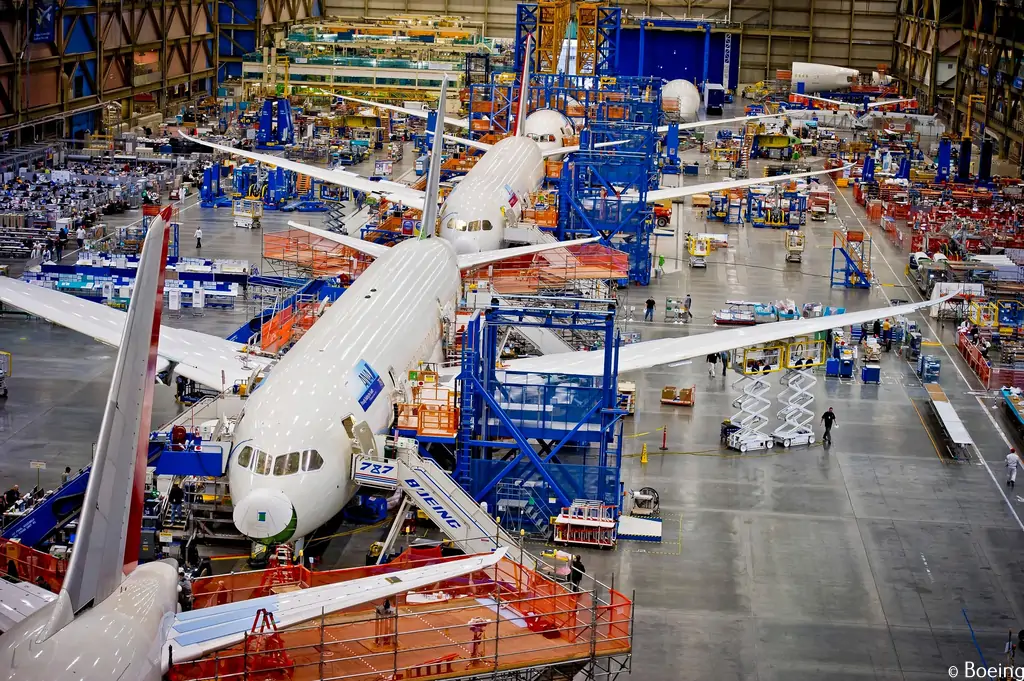
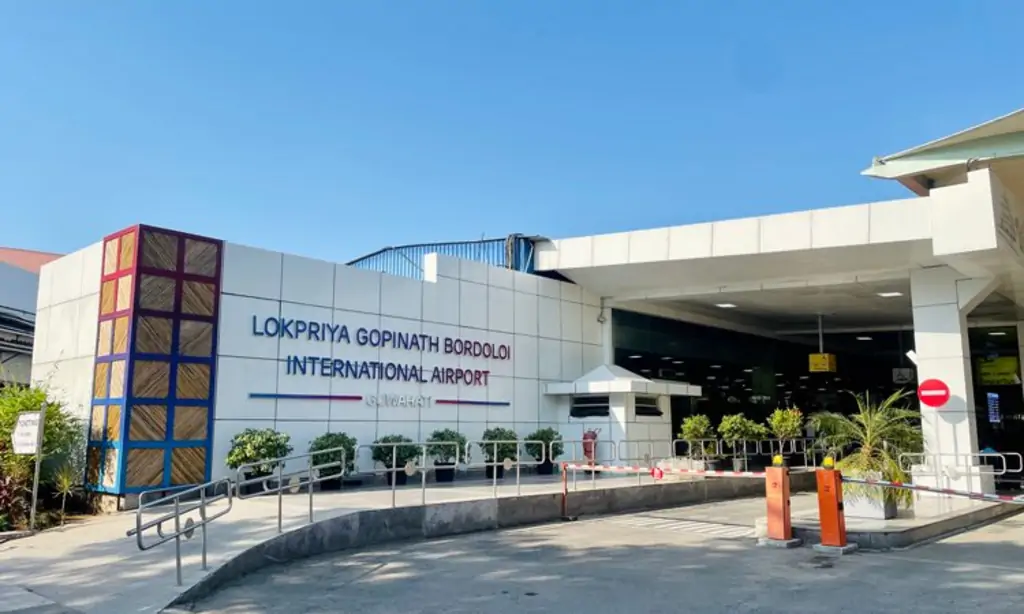

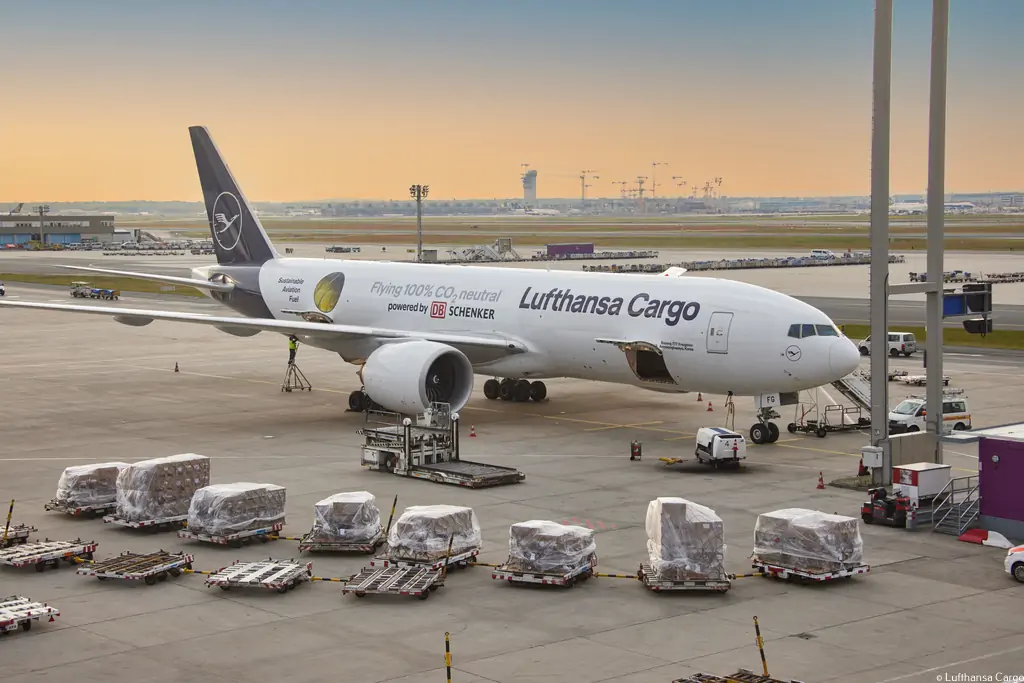
Comment